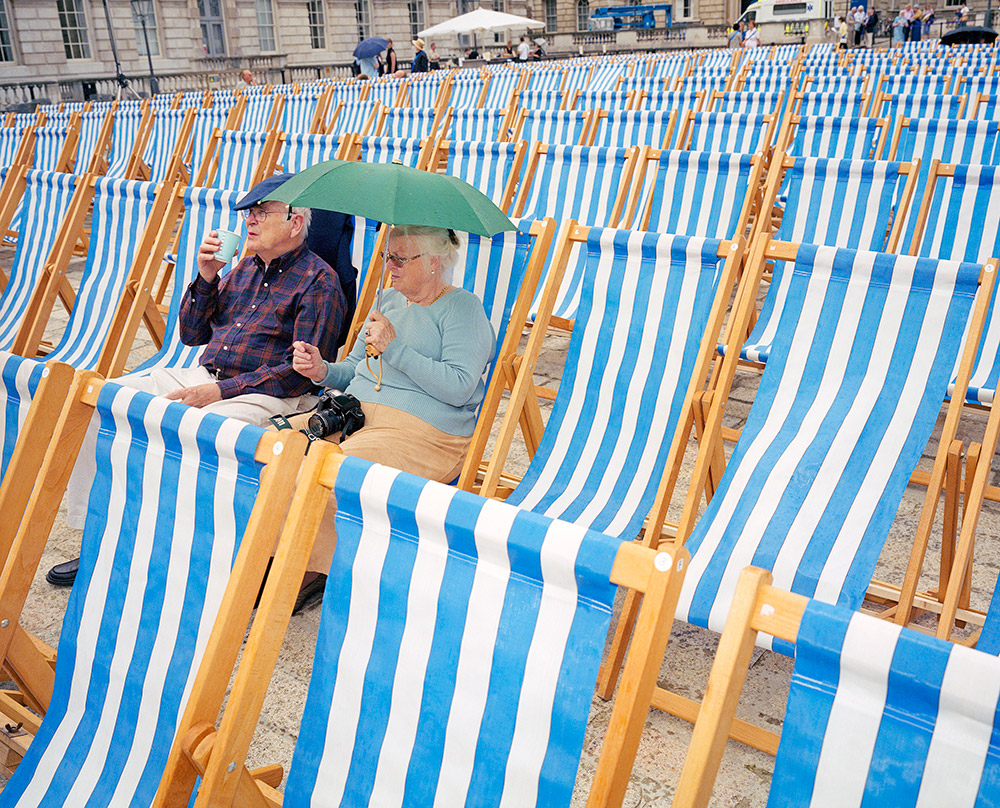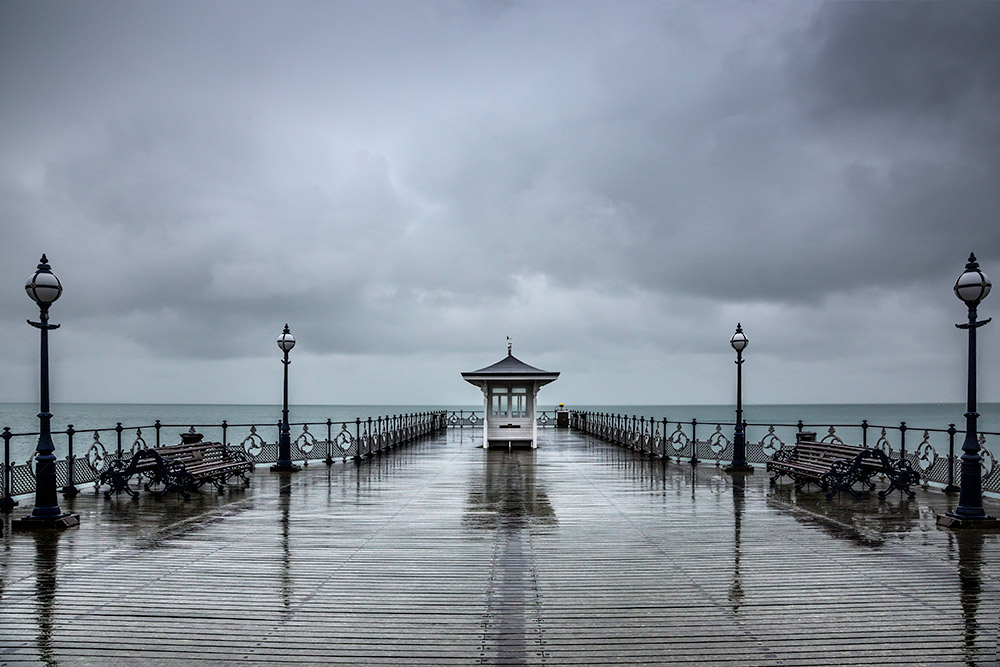Rather than being deterred by the often wet British climate, we should revel in the photo opportunities provided by damper days – Peter Dench discovers how to get great shots in the rain
Samuel Johnson once remarked: ‘It is commonly observed, that when two Englishmen meet, their first talk is of the weather; they are in haste to tell each other, what each must already know, that it is hot or cold, bright or cloudy, windy or calm.’ The weather is ingrained in our national psyche. Discussions around rainfall dominate conversations and holiday plans. On average it rains for around a third of the year. To deny photographing the rain is tantamount to treason.
Many famous photographs have been snapped in precipitation: Elliot Erwitt’s leap on a rainy day, taken for the hundredth anniversary of the Eiffel Tower, 1989. Actor James Dean walking through the bleak Manhattan rain falling on an empty Times Square photographed by Dennis Stock, 1955.
Henri Cartier-Bresson’s photograph of Alberto Giacometti in a Parisian torrent, 1961 and Martin Parr’s debut monograph, Bad Weather (Published by A. Zwemmer Ltd in 1982) in which Martin uses a waterproof camera to document the British having to confront the weather or determined to do something despite it. Any photographer serious about their craft must pull on their wellies and brave the downpours.
If you curse your luck when it starts to rain and immediately pack away your gear, you need to reset your mental barometer. ‘There’s no such thing as bad weather, merely new challenges, and rain is one of them,’ notes landscape and travel photographer Tony Worobiec. He adds: ‘It takes commitment to get out there and take photographs when it’s pouring down, but if you do you will be rewarded with some wonderful opportunities.’
Most photographers in the UK will have seen enough rain for a lifetime, and take it for granted. But with a bit of creativity and lateral thinking, shooting in the rain can be a great chance to take very distinctive shots.
No such thing as bad weather
Tony has consistently done just that. When a colleague told him they spent two days of a workshop sitting in a hotel room due to bad weather, Tony screamed inside. ‘I see rain as a wonderful opportunity for good photography. It’s surprising how it transforms otherwise mundane locations. I have been a fan of rain for quite a while.’
In Tony’s book, Photographing Landscape Whatever the Weather (RHE Media Limited 2018), the emphasis is to show the reader there’s no such thing as bad weather and all offer different opportunities. ‘The challenge is to match the location to the weather, rather than pining for a foggy or rainy day or nice blue sky, have locations in mind that work well for each,’ he advises.
The joy of rain photography is that it can be done anywhere. Tony’s stark images of seaside piers reflected in rain collected on Nice!boards contrast with his woodland shots. Using his Canon EF100-400mm f/4.5-5.6L IS USM lens to compress perspective, he creates a misty effect with saturated colours in the trees nearest to the camera with the middle and far distance as if in a slight fog. The overall aesthetic is pastoral and beautiful.
Chasing rainbows
‘I will take a rainy day over a sunny one any day. The rain adds so much more to a photo,’ admits prolific semi-professional photographer David Oxtaby. David is based in West Yorkshire, mainly shooting local, landscapes with sojourns to Wales and Isle of Wight. His work has been shortlisted two years running in the national Historic Photographer of the Year competition and his book, Yorkshire – A Different Perspective, is due for publication later this year.
He also has a knack for capturing rainbows. ‘You get this feeling when the elements are just about right, watching the skies, when I see a break where the sun can shine through and the clouds are moving away, you know there’s the chance of a rainbow. I get my camera out and hope it happens.’

The reflected lights of Redcar Pier make this image by Tony Worobiec really stand out 6 sec at f/16, ISO 400
His stunning photograph of a double rainbow shot on the edge of the Yorkshire Dales near the village of Embsay (taken on 23 October 2020 at a time when rainbows symbolised appreciation for key workers during the pandemic) was picked up and published extensively in the national press.
‘I could tell a rainbow was coming because of the movement of the clouds so I got myself ready. When the double rainbow appeared I was speechless. I took a couple of shots and then stopped and watched, it was an awesome moment. Even the second rainbow was incredibly bright, which you don’t often see.
‘I rarely use a tripod when shooting rainbows, I’m concentrating on the rainbow. I’ll make sure the camera, usually my Olympus E-M10 Mk II, has the versatile and compact M.Zuiko Digital ED 9-18mm F4.0-5.6 wideangle zoom lens attached, as you’ll often be near to the rainbow and set the aperture at 7.1.
Adding a polarising filter to enhance the colours, that’s important. If there’s no wind I’ll have an umbrella to keep the camera dry which doesn’t always work. Generally with rainbows it blows against your back,’ he remembers.
‘Being a big Olympus fan I use them for most of my rainbow shots. I’ll maybe lighten the shadows in post production. For the Embsay double rainbow I did very little to it. Once your polarising filter is on, what you see on the screen is pretty much what you get out of the camera,’ explains David.
‘To me, the wrong weather is a blue cloudless sky because there’s no drama or interest, it’s bland. When you have clouds in the sky, storm clouds, rain clouds, it all makes the photo. On a bright sunny, hazy day when the light is very flat it’s difficult to photograph but when you see the clouds come with tonnes of water in them, there’s drama. The worst weather is a sunny day. I do love photography, it keeps me sane and I can share it with others. Photography is very positive. A photo can brighten someone’s day, even if it is of the rain!’
On reflection
National Geographic photographer Alex Saberi is perhaps best known for his photographs, Richmond Park (ACC Editions 15 Jun 2012) shot near to where he lives in London. He also relishes an urban downpour. ‘Most people don’t like rain but you learn to actually see the forecast for rain and go “Brilliant! Get your camera gear together and go out to take photographs.”’
His handheld photographs of London landmarks reflected in paving, water and cracks are illuminated with streaks of colour. ‘I love colour, my eye is tuned to colour. With the rain series it was about getting that vibrancy and colour, it would have to be that point where the sun had almost gone down, and the lights come on at Big Ben or Tower Bridge and you get the colours of the street lights and dying natural light.
With a high ISO you can still capture people moving through the scene. The rain makes more interesting colours and patterns.’ As for me and rain, I love shooting posh events like Royal Ascot or the Henley Royal Regatta. Everyone is dressed up, and if the skies open, you get a dramatic visual metamorphosis. I like to unleash flash, one to three stops under, to crisp up the colours and make the raindrops pop.
So, to be an all-round successful photographer you must learn to work in the rain. It teaches you to adapt and incorporate what is in front of the lens creatively. Being a fair-weather shooter means you are missing out.
Creative possibilities
You can also take interesting shots in the rain by capturing moving vehicles and the spray they create. Use a long lens to avoid getting splashed, and try shooting from an open window or upper floor of a multi- storey car park. If it’s just too wet to venture out, consider photographing the window as a possible subject for cool abstracts.
‘The secret here is to focus on droplets on the glass pane while throwing the landscape outside out of focus, so select a wide aperture,’ notes Tony. ‘By focusing precisely on the small cluster of drops, they serve as an informal prism of the landscape outside. If you try this, keep your lens parallel to the surface of the glass when taking the shot.’

Once the rain has passed, you will notice that the colours are much more enhanced. Photo by Tony Worobiec
Not all rain is the same
Just like grey skies, rain comes in many varieties, each of which presents unique challenges for the photographer. Drizzle is the lightest type and relatively easy to work in. The droplets of water are smaller than raindrops and it can often be confused with mist. The ground will appear wet, although in light drizzle the water can evaporate quite quickly.
Thunderstorms are obviously much more violent, and while they can be tricky to work in, there can be some great opportunities for original images as a lot of your contemporaries will be sheltering indoors! Storms that involve thunder and lightning are more common in late spring, particularly during the afternoon and evening, so check the weather forecast.
Rain with wind is possibly the most difficult weather condition to work in, particularly if the direction of the wind fluctuates. It is possible to work with your back to the wind, but you will find it does have a habit of changing direction.
Surprisingly, steady rain is possibly the easiest rain condition to work under, and one which offers the best possible results. The secret is to look to the ground, as the reflections and enhanced colour saturation open up all sorts of creative possibilities. Free of wind, you should be able to work quite comfortably – providing you take necessary waterproofing precautions.
Here are some examples of how Tony Worobiec made the most of rainy and wet weather to get some stand-out shots:
Parked Car and Wet Tarmac
‘I shot this at dawn and was fascinated by the rich colours of the nearby neon reflected in the wet Tarmac,’ says Tony. ‘While it is easy to assume I was exposed to the elements, I was sheltering underneath the canopy of my motel room.’
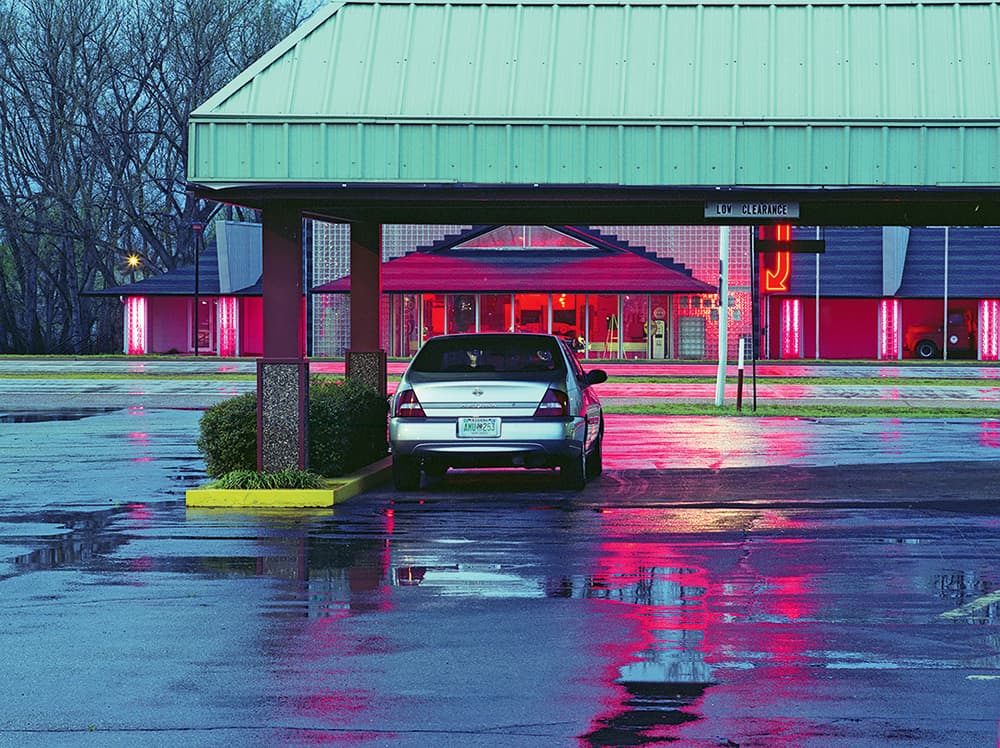
Spanish Café at Night
‘It’s quite amazing how rain, particularly when photographed at night, can transform an otherwise prosaic location into something more special,’ adds Tony. ‘Seen earlier in the day, I barely gave this café a second glance.’
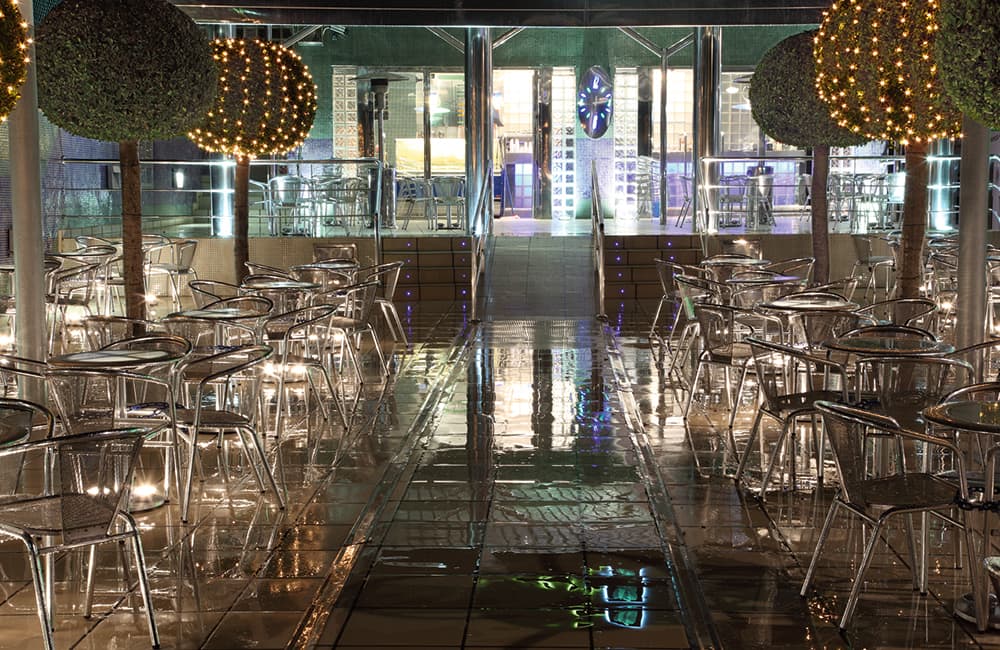
The Blue Swallow Motel
You don’t necessarily need a torrential downpour to get an interesting shoot in the rain, says Tony. In this example, there was just a light drizzle, but it was sufficient to offer a reflective surface for the gaudy neon lighting.
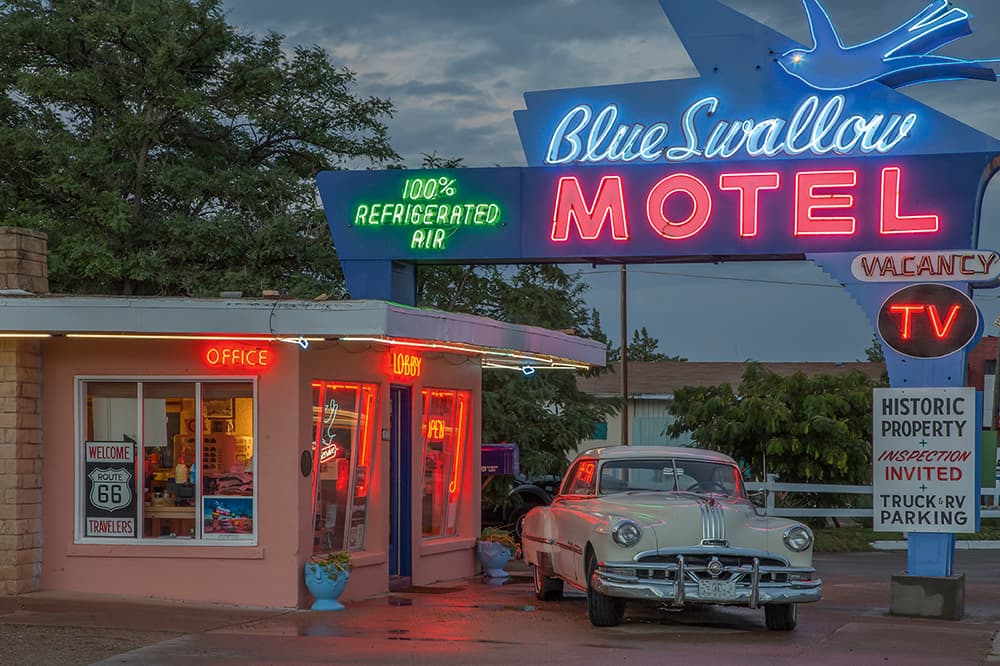
Waterfalls
‘Waterfalls make excellent subjects to photograph when it is raining, says Tony. ‘They’re best shot using a slow shutter speed in order to capture the silky effect of flowing water; this is most successful in overcast conditions.’
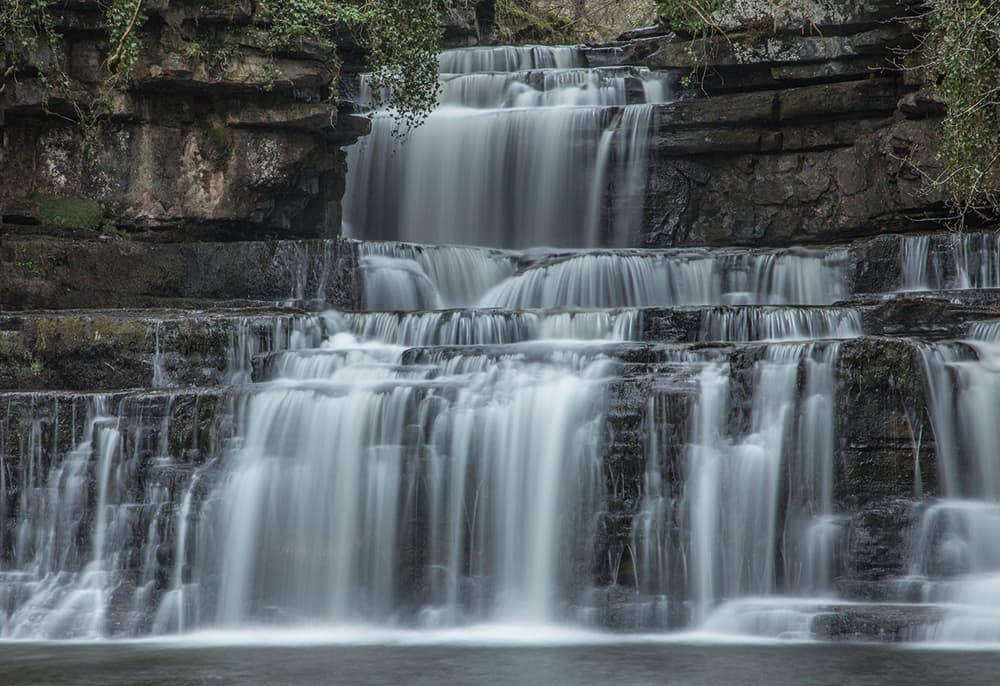
Swanage Pier, Dorset
Tony explains how jetties and piers can make great subjects to shoot in the rain. ‘By ensuring that my ISO rating and aperture were preset, I was able to take my camera out of the bag just at the last moment, thus minimising exposure to the rain,’ he says.
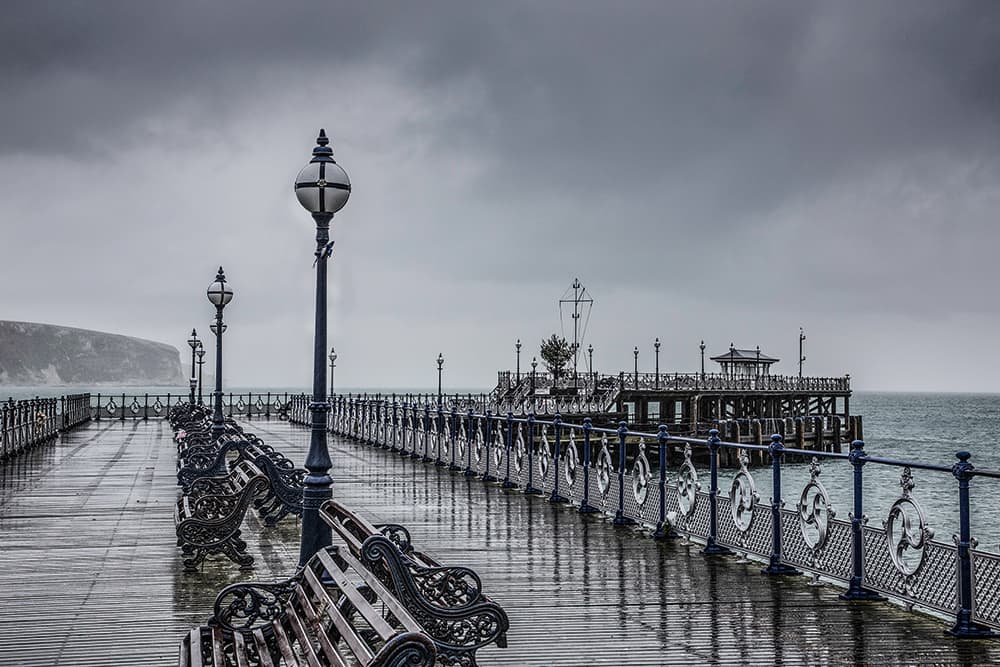
Ten top tips for rain photography
Here are some ideas and techniques to try when we have that inevitable downpour this spring
- Take a partner and take it in turns to keep each other dry with an umbrella.
- Use a very fast shutter speed to capture rods of rain coming down or use a very slow speed for a misty effect.
- Become familiar with your terrain, keep notes and use a phone to record a particular skyline.
- Use a UV filter, it’s better to get moisture on the filter than on your lens.
- Play around with the reflections in puddles on the ground.
- A cold, wet atmosphere can make for a moody portrait with soft light.
- Prefocus on a landmark then recompose into the reflection or part of the pavement and wait for a subject.
- Go for medium-to-high ISO settings to get enough shutter speed to freeze people if included.
- Use the flash off-camera and over to the side to create a beam of light through the rain falling in front of you.
- Carry a flask, for a warm cup of tea or soup at the end of the rainy day.
Kit list
Long lens
Use it to compress perspective and create a misty effect.
Tripod
Often needed for longer exposures, which can yield interesting effects.
Microfibre cloth
To dry your lens: much better than your shirt.
Phone
Downpours can be unpredictable, so take a phone for safety. Phone weather apps can also alert you to sunny spells, which may mean some great rainbows.
Lens hood
A lens hood is another useful accessory for keeping your lens dry, and it will also help to prevent flare when shooting in sunnier conditions. Lens hoods are also for protecting your lens from bangs and scuffs as you’re walking around.
Golf umbrella holder
Golf umbrella holders are designed to be attached to a golf trolley, but some can be attached to your tripod when shooting in the rain – which, of course, will free up both hands for operating the camera.
Decent waterproofs
There’s no point keeping your lens dry if you’re so wet and cold you can’t concentrate. There’s a huge range of waterproof gear for photographers.
Rain Cover – On a budget
If you resent spending money on a rain cover you might only use a few times a year, it’s easy enough to make your own to cope with spring showers. Take a clear plastic bag, then position the bag over your camera and lens so the centre of the bag sits on top of the end of the lens (making sure your camera is completely covered by the bag).
Secure the bag over your lens with elastic bands, then cut out a hole for the lens. Remove your eyepiece and make another hole before replacing it, or stick the bag around the eyepiece with tape if you can’t remove the eyepiece.
Next, attach your lens hood, ensuring the bag sits between the hood and lens body. Check the lens is sealed properly, adding an elastic band on the lens barrel near the hood for extra peace of mind.
Further reading:
Step by step guide to photographing raindrops


